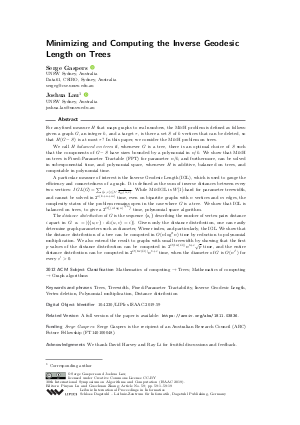LIPIcs.ISAAC.2019.59.pdf
- Filesize: 0.56 MB
- 19 pages

 Creative Commons Attribution 3.0 Unported license
Creative Commons Attribution 3.0 Unported license








Feedback for Dagstuhl Publishing